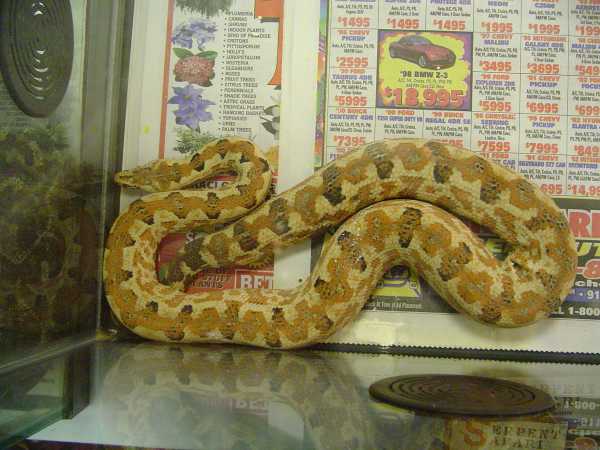- Candoia
Taxobox
name = "Candoia"

image_caption = Solomon Island ground boa, "C. carinata paulsoni"
regnum =Animalia
phylum =Chordata
subphylum =Vertebrata
classis =Reptilia
ordo =Squamata
subordo =Serpentes
familia =Boidae
subfamilia =Boinae
genus = "Candoia"
genus_authority = Gray, 1842
synonyms = * "Cenchris" - Gray, 1831
* "Cenchrus" - Swainson, 1839
* "Candoia" - Gray, 1842
* "Tropidoboa" - Hombron & Jacquinot "In" Jacquinot & Guichenot, 1842
* "Enygrus" - A.M.C. Duméril & Bibron, 1844
* "Erebophis" - Günther, 1877
* "Candoia" - Forcart, 1951McDiarmid RW, Campbell JA, Touré T. 1999. Snake Species of the World: A Taxonomic and Geographic Reference, vol. 1. Herpetologists' League. 511 pp. ISBN 1-893777-00-6 (series). ISBN 1-893777-01-4 (volume).]:"Common names: bevel-nosed boas, keel-scaled boas.ITIS|ID=174322|taxon="Candoia"|year=2008|date=5 July] ""Candoia" is a
genus of non-venomous boas found in mostly inNew Guinea andMelanesia . Fourspecies are currently recognized.Description
Members in this genus typically have a rounded and heavy body, with a flattened triangular shaped head, and an upturned nose. Colors and patterns vary greatly, but most are various shades of brown to black. They can vary in adult size from 60 cm to 1.8 m. Males are typically smaller than females and can be distinguished by their prominent cloacal spurs.
Geographic range
Found from
Samoa andTokelau west throughMelanesia toNew Guinea and theMaluku Islands .Behavior
All are primarily nocturnal.
Feeding
The primary diet consists of frogs and lizards.
Reproduction
Breeding occurs early in the year, typically after rains. Several males will approach and pursue a single female, though, there is no combat between the males. Females seem to only
ovulate once every two or three years and give birth to litters averaging 10 or so neonates. The Solomon Island ground boa, "C. carinata paulsoni" is an exception as it is known to have particularly large litters, occasionally producing 30 or 40 small neonates.Captivity
These snakes are frequently imported for the exotic pet trade, but are now being bred in captivity with some regularity by private individuals. Their small size and ease of care make them interesting captives, but wild caught specimens are known to not acclimate well. The stress of captivity manifests itself in the form of lack of interest in food. Their natural diet often presents a problem for hobbyists mainly familiar with using rodents as food.
pecies
"*) Not including the nominate subspecies."
T")Type species .ee also
*
List of boine species and subspecies
*
*References
External links
* [http://www.kingsnake.com/candoia/ The Candoia Page] at [http://www.kingsnake.com/ Kingsnake.com] . Accessed
5 July 2008 .
Wikimedia Foundation. 2010.
